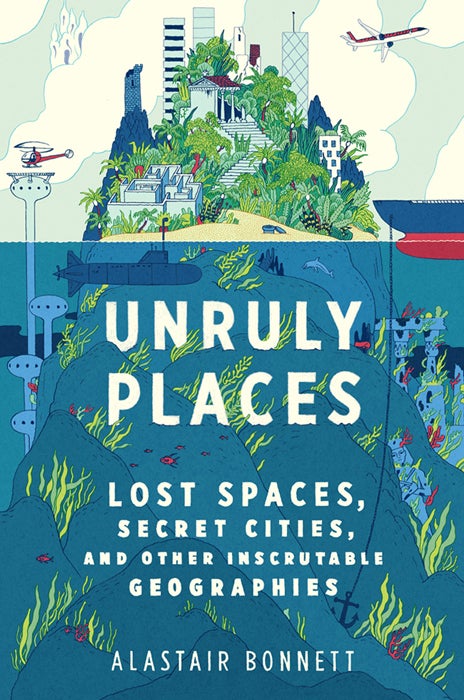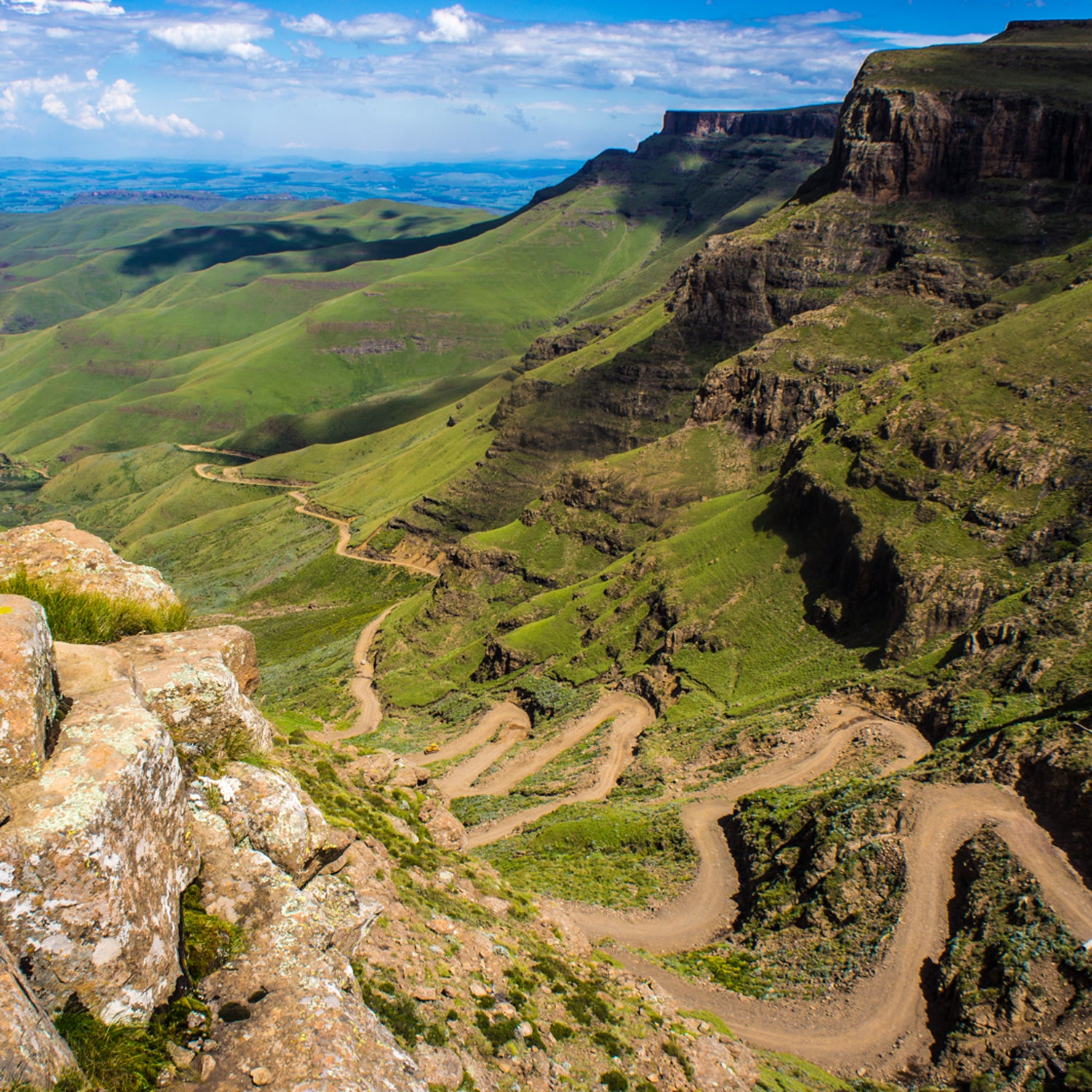“No man’s land” is a term that, to the modern ear, can sound like stepping onto a battlefield. In fact, the phrase refers back to the idea of unclaimed land (recorded as “ in the Domesday survey of England of 1086) and still carries an echo of perennial hopes for free land, for places beyond the control of others. Ordinary places become extraordinary in no man’s land.

Such in-between places remind us how dependent we are on borders—that our sense of order and certainty draws deeply from the knowledge that we are in governed territory. No man’s lands may be vast stretches of unclaimed land or tiny scraps left over from the planning of cities, though the uncertainty of the no man’s land is especially keenly felt in places that the outside world refuses to recognize or that appear to be between borders.
The notion that places might slip down between borders led me on a geographical quest. I went looking for the farthest possible distance between the border posts of two contiguous nations, to see how far they could be stretched apart.
Most border posts face each other. A change of signage, a different flag, a line on the road, all combine to signal that no sooner have you stepped out of one country than you have arrived in another. But what happens if you keep on opening up that space?A few years ago, with the help of hours spent blinking at the tiny fonts favored on travelers’ Internet chat forums, I found what I was looking for. Along a road between in West Africa the distance between border posts is 27 kilometers.
It is not the world’s only attenuated border area. The Sani Pass, which runs up to the mountainous kingdom of Lesotho from South Africa, is the most famous. It’s a rough road, although much visited by tourists in 4x4s seeking out the highest pub in Africa, which sits near the top of the pass. The drama of the trip is heightened by the thrill that comes from learning that this is no man’s land. The South Africa border control, complete with “Welcome to South Africa” signs, is 5.6 kilometers away from the Lesotho border office.
Another specimen is to be found in the mountainous zone between border posts on the Torugart Pass that connects China and Kyrgyzstan. Central America also has a nice example in Paso Canoas, a town that can appear to be between Panama and Costa Rica. It is habitually described as no man’s land because, having left through one border post, you can go into the town without passing through immigration to enter the other country. Some visitors relish the impression that the town around them is beyond borders. Partly as a result, Paso Canoas has developed a darkly carnival atmosphere, as if it were some kind of escaped or twilight place.
What these gaps reflect back at us is our own desires, especially the wish to step outside, if only for a short time, the claustrophobic grid of nations. We probably already suspect that it’s an illusion. Shuffling forward in a queue and making it past the passport officer does not mean you are, at that exact moment, leaving or entering a country. Such points of control exist to verify that you are allowed to enter or leave. Their proximity to the borderline is a legal irrelevance.
Yet this legal interpretation fails to grasp either the symbolic importance of the border point or the pent-up urge to enter ungoverned territory.The fact that Paso Canoas is split by the Panama– Costa Rica border rather than actually being between borders doesn’t stop people from describing it as an “escaped zone.”Similarly, the steep valley up the Sani Pass is nearly all in South Africa, and the road down from Senegal into Guinea is always in one nation or another, but that isn’t how travelers experience it or even what they want.
The attraction of these in-between spaces has a lot to do with the fact that they are on land. Going through passport control at an airport provides no comparable thrill, even though international airspace is far more like a genuine no man’s land than any number of dusty miles on the ground. It seems that escaping the nation-state isn’t all that is going on here. There is a primal attraction to entering somewhere real, a place that can be walked on, gotten lost in, even built on, and that appears to be utterly unclaimed.
Some of the overland tourist trips that occasionally rumble along the Senegal–Guinea highway offer camping in the no man’s land as part of the package. Like other examples, it’s a zone that provokes people to muse on allegiance and belonging. In his essay , the American travel writer Matt Brown describes encounters with villagers along the Senegal–Guinea road that provoke speculation on the nature of national identity:
I stopped my bike to chat with the woman pounding leaves. I asked in French (my Pular only goes so far), “Is this Guinea?” “Yes,” she answered. Surprised that she even understood French, I posed a follow-up question. “Is this Senegal?” I asked. “Yes,” came the reply.
A little later Brown sits on “a nationless rock” and imagines these villagers as freed from the “archaic, nonsensical national borders drawn up by greedy European leaders at the Conference of Berlin over 100 years ago.” Stretching out border posts does seem to break the seal on the national unit. The resultant gap may not be of much legal import, but for travelers on the ground it creates a sense of openness and possibility.
Yet while travelers may relish this expansiveness, the consequences for those who have to live and work in such places can be less positive, such as heightened insecurity and a sense of abandonment. This is one of the reasons why African states have been trying to close the gap in such anomalous spaces. The , which supports economic infrastructure projects across the continent, has made “establishing juxtaposed checkpoints at the borders” of its member states a priority, including at the Guinea–Senegal border.
What most concerns the fund’s members is the impact that these distant border posts have on the flow of trade. Along the Guinea–Senegal route there are nightmare tales of vehicles being sent back and forth by officials who keep asking for new documentation or demanding new bribes. In-between land can easily turn into a place of bureaucratic limbo where both travelers and locals are uniquely vulnerable to tiresome and corrupt officialdom. Patches of ground “between” nations are places that can be thought of as free, but they are also places where we are reminded why people willingly give up freedoms for the order and security of being behind a border.Â
Excerpt from Unruly Places: Lost Spaces, Secret Cities, and Other Inscrutable Geographies. Copyright © 2014 by Alastair Bonnett. Used by permission of Houghton Mifflin Harcourt Publishing Company. All rights reserved.


